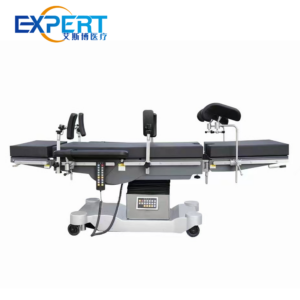Address
304 North Cardinal St.
Dorchester Center, MA 02124
Work Hours
Monday to Friday: 7AM - 7PM
Weekend: 10AM - 5PM
Pediatric surgery requires a delicate balance between surgical precision, patient safety, and emotional well-being. Operating tables designed for pediatric patients play a pivotal role in shaping these considerations. The unique anatomical and psychological needs of children demand innovative solutions that prioritize safety, comfort, and efficient surgical workflows. In this article, we explore the dynamic world of innovations in pediatric operating tables, delving into advancements in design, technology, patient-centered features, and the broader impact on pediatric surgical care.

Pediatric surgery differs significantly from adult procedures due to the size and developmental stage of patients. Surgeons must navigate intricate anatomical differences and address the emotional needs of young patients and their families.
Innovations in pediatric operating tables bridge the gap between surgical precision and patient well-being. Tables must accommodate small bodies while ensuring optimal positioning for accurate procedures.
Pediatric patients experience rapid growth, necessitating operating tables with adjustable dimensions. Tables that can expand and adapt to a child’s changing size ensure long-term suitability for various age groups.
Innovative designs prioritize comfort and psychological support. Child-friendly aesthetics, colorful designs, and interactive features help alleviate anxiety, creating a more positive experience for young patients.
Operating tables equipped with integrated imaging technologies provide real-time visualization during procedures. Surgeons can accurately assess anatomical structures and make informed decisions without relocating the patient.
Innovative operating tables incorporate remote monitoring capabilities. Medical staff can track vital signs, anesthesia levels, and patient well-being throughout the procedure, ensuring immediate intervention if needed.
Specialized positioning aids optimize patient placement. Cushions, supports, and adjustable features cater to pediatric anatomical needs, ensuring correct alignment for surgical success.
Operating tables designed with intuitive interfaces engage children before surgery. Interactive displays or animations can distract and entertain patients, easing anxiety and making the surgical experience less intimidating.

In pediatric surgeries that require imaging, innovations aim to reduce radiation exposure. Operating tables with radiation-absorbing materials or shielding techniques protect children from excessive radiation during procedures.
Cutting-edge imaging technology further minimizes radiation exposure. High-resolution, low-dose imaging systems offer clearer images with reduced radiation, enhancing safety for pediatric patients.
Innovative safety features prevent unintentional table adjustments by children. Child-proof mechanisms ensure that the table remains in the desired position during procedures, enhancing surgical safety.
Operating tables for pediatrics prioritize emergency accessibility. Quick-release mechanisms allow medical personnel to swiftly adjust or transfer the patient in critical situations.
Q1: How do innovations in pediatric operating tables address anatomical differences?
A1: Innovations in design and adjustability accommodate the unique anatomical needs of pediatric patients, ensuring accurate positioning and surgical success.
Q2: How do integrated imaging technologies benefit pediatric surgeries?
A2: Integrated imaging technologies provide real-time visualization, allowing surgeons to assess anatomical structures without relocating the patient.
Q3: What role do patient-centric features play in pediatric operating tables?
A3: Patient-centric features such as pediatric positioning aids and interactive interfaces create a more comfortable and engaging experience for young patients.
Q4: How do innovative safety features contribute to pediatric surgical safety?
A4: Innovative safety features prevent unintentional adjustments, enhance surgical safety, and provide emergency accessibility during critical situations.
Innovations in pediatric operating tables epitomize the union of medical expertise and technological advancement. As the healthcare landscape evolves, the needs of pediatric patients remain paramount, driving the development of tables that blend precision, safety, and comfort. The marriage of intuitive design, cutting-edge technology, and patient-centered features reflects a commitment to holistic care, where surgical mastery converges with emotional well-being. These innovations pave the way for a future where pediatric surgeries are defined by their transformative impact on young lives, ensuring that each procedure is carried out with the utmost precision, empathy, and the promise of a healthier tomorrow.
